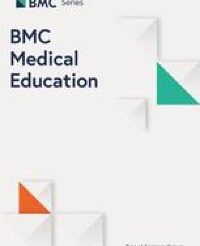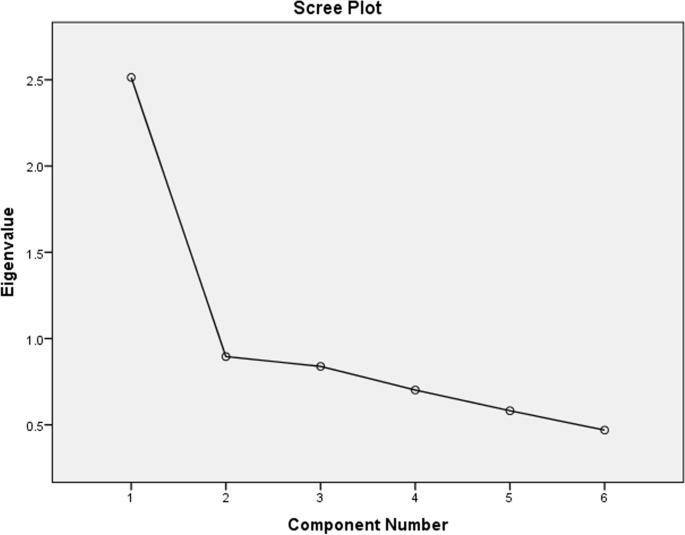“METAPAD” (METAbolic PAthways Decoded) – a gaming innovation to ease the complexity of metabolic pathways by promoting self-directed, active, participatory learning in small groups | BMC Medical Education | Full Text

Students’ perceptions towards METAPAD gaming puzzle
The data obtained from 103 first professional-year undergraduate medical students admitted at the Panimalar Medical College Hospital & Research Institute, Chennai during the Academic Year 2021–2022, who participated in the METAPAD gaming Puzzle was analysed. The mean age of the students was 19.46. Majority of the participants were females (66%). According to the VARK scale of learning styles, The predominant learning style of most of the students was multimodal (49.5%) followed by kinaesthetic (29.1%) and with the least preferred style being read/write (3.9%). Table 4 summarises the demographic characteristics of students who participated in METAPAD gaming Puzzle.
The perception survey on METAPAD gaming Puzzles as an effective study tool received overwhelmingly positive responses from the students. The majority of the students enjoyed solving the puzzles and found the clinical cases interesting. They perceived the puzzles to have stimulated their curiosity in learning complex metabolic pathways in biochemistry (96.2%) and enhanced their problem-solving and critical thinking skills (> 98%). The students felt that solving METAPAD gaming puzzles helped them recall the topics they had learned (89.4%) and improved interaction among classmates (100%). They also appreciated the orientation of the puzzles towards important topics (77.6%) and believed sufficient time was given to solve them (86.4%).
Overall, the students perceived METAPAD gaming Puzzle as a valuable tool for learning and revising complex metabolic pathways (92.3%). They found it to be a good review of lecture material and believed it promoted meaningful learning compared to traditional classroom teaching (97%). The puzzles were seen to encourage active independent learning, student reasoning, and communication skills. But around 30% of the students were not sure about using the METAPAD gaming puzzle for evaluating a student. A detailed statistical analysis of the responses with regard to student’s perceptions towards the METAPAD gaming puzzle on the 5-point Likert scale with mean and standard deviation values is presented in Table 5.
Upon analysing the correlation between age and gender independently with the perceptions towards METAPAD gaming puzzle, there was no significant difference found in students’ perceptions of METAPAD gaming puzzle among the different age groups and gender. All the students below and above 20 years of age irrespective of gender had perceived the METAPAD gaming puzzle to be an integrated and joyful learning tool. Tables 6 and 7 provide a detailed representation of the association between age and gender with perception towards the METAPAD gaming puzzle. Furthermore, on analysing the association between different learning styles and perception of the METAPAD gaming puzzle, there was a significant difference in students’ perception towards the statement, “We need to be focused to solve the METAPAD gaming Puzzle” (p = 0.001) among different types of learners. No other significant difference in students’ perception was identified in any of the other statements. Table 8 gives a detailed statistical analysis of the perceptions of the METAPAD gaming puzzle across different learning styles according to the VARK scale.
For the first open ended question, “do you wish to make any additional comments?”, 29 students responded through the survey. In addition to that, personal interviews were conducted team-wise to collect the feedback of the students regarding METAPAD gaming puzzle and their responses were recorded. Consent was obtained from the respondents to use the recordings anonymously for research purpose.
Thematic analysis of students’ feedback
After the analysis of students’ comments and recordings through the perception survey and personal interviews, all the feedback was categorised into 12 common themes. The themes were then verified to ensure that they represent the original meaning after feedback. All the feedback received from the students was carefully assigned to the respective themes.
Based on the students comments, the assigned themes were (1) Fun in Learning, (2) A Self-Directed Learning Experience, (3) An Innovative Style to Learn, (4) An Integrated Learning Approach, (5) Joy of Working Together, (6) Effective Communication, (7) Actively-Engaging Environment, (8) Efficient Time Management, (9) Brain Teaser Activity, (10) Putting Plans into Actions, 11) Future Learning with Puzzles and 12) Points to Improvise. Themes and their frequency in the feedback are shown in Fig. 3 and explained in Tables 9, 10 and 11. A total of 171 responses with grouped under 12 themes. Few representative comments are enumerated below
Frequency of responses included under each theme
“This is your and the biochemistry’s brain child. Thank you for giving us such a different, unique, mind blowing and fun opportunity. This has helped us develop team involvement and interaction which has increased our knowledge of each other and learnt different ways of working with each other. So thank you once again.”
“Initially we were new to the team so we don’t know each other very much, so it started off a bit rough and then later on we communicated with each other well and we decided and discussed how to solve the puzzle as a team and we all became friends now and we ended up winning”
“Learning by solving these kind of puzzles made it easier to remember things the cycles are hard to memorise but even harder to keep it in mind retention is very low but these puzzles helped in memorising, I think if puzzles were implemented in all the chapters that we learn it would be helpful even more”
“
It was very interesting, it made me recall the pathways that I have learnt and interlink the pathways, eg: glycogen metabolism I learnt both the pathways separately but when they gave together I learnt how to incorporate both ”
Factor analysis of the perceptions items
The questionnaire used to evaluate students’ perception towards the METAPAD gaming puzzle as an effective learning tool was divided into 4 domains: (i) METAPAD Game Materials (5 items), (ii) Brainstorming with METAPAD (4 items), (iii) METAPAD – earning Experiences (6 items) and (iv) Advantages of METAPAD (6 items). Factor analysis for the METAPAD gaming puzzle perceptions is represented in Table 12.
Domain 1: METAPAD game materials
Considering the first domain that evaluated students’ perceptions towards the METAPAD game materials, An Eigenvalue of more than 1 was obtained for 2 components. The scree plot for the same is represented in Fig. 4. As there are 2 components, the rotational component matrix reveals, “The clinical cases given in METAPAD gaming Puzzles were interesting” and “Length of time provided for solving the METAPAD gaming Puzzle was sufficient” as the most influencing factors with component values of 0.054 and 0.878.
Domain 2: brainstorming with METAPAD
Secondly, upon analyzing the most influencing factors in Domain 2 that included evaluating brainstorming with METAPAD, the scree plot revealed one component with an Eigenvalue of more than one. Thus, the component matrix (without rotation) indicated that “METAPAD gaming Puzzle tool stimulates my curiosity in learning the complex metabolic pathways in biochemistry” was the most influencing with a component value of 0.844. Figure 5 represents the scree plot for Domain 2.
Domain 3: METAPAD – learning experiences
Domain 3 included students’ perceptions regarding their learning experiences with METAPAD gaming puzzle. Figure 6 shows the scree plot with one component having an Eigenvalue of more than 1. Thus, without rotation, the component matrix indicated that “The METAPAD gaming Puzzle enhanced my learning” is the most influencing in the domain with a component value of 0.758.
Domain 4: advantages of METAPAD
Finally, the last domain included the perceptions of students in regard to the advantages of METAPAD. An Eigenvalue of more than 1 was obtained for only one component as represented in Fig. 7. Thus, the component matrix without rotation revealed that “METAPAD gaming Puzzle is a good tool to study and revise the complex content of metabolic pathways” is the most influencing with a component value of 0.839.
Scree plot for domain 4




